※ちょくちょくGithubで公開してもらえませんか?的なことを聞かれるので、Bitbuckeのアカウントでコードを公開いたしました。ミスなどがあったらすみません。時間があるときに直します。
devise-token-auth 完成物のリンク
関連記事
全て連続しているので上から順に進めていっていただけるとわかりやすいと思います
devise token auth を使って簡単に早くAPIを作る1( api作成 ) 今回はここ
devise token auth を使って簡単に早くAPIを作る2 ( jsonの出力 )
devise token auth api をAngular4 でUIを実装する1 ( angularのセットアップ )
devise token auth api をAngular4 でUIを実装する2 ( ログインを繋げる )
devise token auth api をAngular4 でUIを実装する3 ( 新規登録 )
devise token auth api をAngular4 でUIを実装する4 ( ログインしやすくする)
通常はdeviseでログイン機能を構築することが多いと思いますが、
devise token auth を使用すると、トークンベースで認証が可能となるので、
iOSやアンドロイドアプリを作りたいといった場合に結構重宝しています
複数回に分けて簡単にトークン認証を構築してから、
最後はアクセス制限を使用してみたいと思います!
# rails version rails 5系
ベースを作る
まずはrails new します
$ rails new devise_token_auth --api -d mysql
次にGemfileをいじります
source 'https://rubygems.org'
git_source(:github) do |repo_name|
repo_name = "#{repo_name}/#{repo_name}" unless repo_name.include?("/")
"https://github.com/#{repo_name}.git"
end
# 修正依頼がありましたので、追加しました。お手数おかけしました。
gem 'omniauth'
gem 'rails', '~> 5.0.1'
gem 'mysql2', '>= 0.3.18', '< 0.5'
gem 'puma', '~> 3.0'
# トークンベースの認証を行うためのgem
gem 'devise'
gem 'devise_token_auth'
# jsonを扱うためのgem
gem 'jbuilder'
# クロスドメイン対策のgem
gem 'rack-cors'
group :development, :test do
gem 'byebug', platform: :mri
end
group :development do
gem 'listen', '~> 3.0.5'
gem 'spring'
gem 'spring-watcher-listen', '~> 2.0.0'
end
gem 'tzinfo-data', platforms: [:mingw, :mswin, :x64_mingw, :jruby]
次はbundle installします
ついでにデータベースも作っておきます
$ bundle install $ rake db:create
devise token auth
devise token auth をインストールします
$ rails g devise_token_auth:install User auth
コマンドを走らせるとマイグレーションファイルが生成されるので、それを編集します
今回は、ユーザーが新規に登録する際に、
- 企業名
- メールアドレス
- 名前
を入力してもらえるようにカラムを追加しておきます
twitterやfacebookでログインする機能は今回は触れないのでコメントします
メールを送信して登録する、といった機能もつけることはしないので、
モデルは以下のように編集してください
class User < ActiveRecord::Base
# Include default devise modules.
devise :database_authenticatable, :registerable,
:recoverable, :rememberable, :trackable, :validatable
# :confirmable, :omniauthable
include DeviseTokenAuth::Concerns::User
end
次にカラムを追加するために、devise token authのマイグレーションファイルを修正します
class DeviseTokenAuthCreateUsers < ActiveRecord::Migration[5.0]
def change
create_table(:users) do |t|
## Required
t.string :provider, :null => false, :default => "email"
t.string :uid, :null => false, :default => ""
## Database authenticatable
t.string :encrypted_password, :null => false, :default => ""
## Recoverable
t.string :reset_password_token
t.datetime :reset_password_sent_at
## Rememberable
t.datetime :remember_created_at
## Trackable
t.integer :sign_in_count, :default => 0, :null => false
t.datetime :current_sign_in_at
t.datetime :last_sign_in_at
t.string :current_sign_in_ip
t.string :last_sign_in_ip
## コメント!
## Confirmable
# t.string :confirmation_token
# t.datetime :confirmed_at
# t.datetime :confirmation_sent_at
# t.string :unconfirmed_email # Only if using reconfirmable
## Lockable
# t.integer :failed_attempts, :default => 0, :null => false # Only if lock strategy is :failed_attempts
# t.string :unlock_token # Only if unlock strategy is :email or :both
# t.datetime :locked_at
##ここも修正!
## User Info
t.string :company
t.string :email
t.string :name
## Tokens
t.text :tokens
t.timestamps
end
add_index :users, :email, unique: true
add_index :users, [:uid, :provider], unique: true
add_index :users, :reset_password_token, unique: true
## コメント!
# add_index :users, :confirmation_token, unique: true
# add_index :users, :unlock_token, unique: true
end
end
さて次はマイグレーションを走らせます
ルートも確認しておきます
$ rake db:migrate
$ rake routes
Prefix Verb URI Pattern Controller#Action
new_user_session GET /auth/sign_in(.:format) devise_token_auth/sessions#new
user_session POST /auth/sign_in(.:format) devise_token_auth/sessions#create
destroy_user_session DELETE /auth/sign_out(.:format) devise_token_auth/sessions#destroy
new_user_password GET /auth/password/new(.:format) devise_token_auth/passwords#new
edit_user_password GET /auth/password/edit(.:format) devise_token_auth/passwords#edit
user_password PATCH /auth/password(.:format) devise_token_auth/passwords#update
PUT /auth/password(.:format) devise_token_auth/passwords#update
POST /auth/password(.:format) devise_token_auth/passwords#create
cancel_user_registration GET /auth/cancel(.:format) devise_token_auth/registrations#cancel
new_user_registration GET /auth/sign_up(.:format) devise_token_auth/registrations#new
edit_user_registration GET /auth/edit(.:format) devise_token_auth/registrations#edit
user_registration PATCH /auth(.:format) devise_token_auth/registrations#update
PUT /auth(.:format) devise_token_auth/registrations#update
DELETE /auth(.:format) devise_token_auth/registrations#destroy
POST /auth(.:format) devise_token_auth/registrations#create
auth_validate_token GET /auth/validate_token(.:format) devise_token_auth/token_validations#validate_token
このままだとデフォルトのコントローラーが使用されてしまうので、オーバーライドして、
- :company(企業名)
を登録できるように修正します
controllersディレクトリに api ディレクトリを作成して、さらにauthディレクトリの中にregistrations_controllerを作成します
$ rails g controller api/auth/registrations
内容は以下のようにします
module Api
module Auth
class RegistrationsController < DeviseTokenAuth::RegistrationsController
private
# :company( 企業名 )を追加できるようにpravateメソッドに修正を加える
def sign_up_params
params.permit(:name, :email, :company, :password, :password_confirmation)
end
def account_update_params
params.permit(:name, :email, :company)
end
end
end
end
ルートを修正して、デフォルトのコントローラーではなく、継承したコントローラーを使えるようにします
Rails.application.routes.draw do
namespace :api do
mount_devise_token_auth_for 'User', at: 'auth', controllers: {
registrations: 'api/auth/registrations'
}
end
end
rake routesして、 api/auth/registrations# **** が使われていたらOKです!
$ rake routes
Prefix Verb URI Pattern Controller#Action
new_api_user_session GET /api/auth/sign_in(.:format) devise_token_auth/sessions#new
api_user_session POST /api/auth/sign_in(.:format) devise_token_auth/sessions#create
destroy_api_user_session DELETE /api/auth/sign_out(.:format) devise_token_auth/sessions#destroy
new_api_user_password GET /api/auth/password/new(.:format) devise_token_auth/passwords#new
edit_api_user_password GET /api/auth/password/edit(.:format) devise_token_auth/passwords#edit
api_user_password PATCH /api/auth/password(.:format) devise_token_auth/passwords#update
PUT /api/auth/password(.:format) devise_token_auth/passwords#update
POST /api/auth/password(.:format) devise_token_auth/passwords#create
# ここを確認!
cancel_api_user_registration GET /api/auth/cancel(.:format) api/auth/registrations#cancel
new_api_user_registration GET /api/auth/sign_up(.:format) api/auth/registrations#new
edit_api_user_registration GET /api/auth/edit(.:format) api/auth/registrations#edit
api_user_registration PATCH /api/auth(.:format) api/auth/registrations#update
PUT /api/auth(.:format) api/auth/registrations#update
DELETE /api/auth(.:format) api/auth/registrations#destroy
POST /api/auth(.:format) api/auth/registrations#create
api_auth_validate_token GET /api/auth/validate_token(.:format) devise_token_auth/token_validations#validate_token
これで、一応は完成です!
initializeの設定
デフォルトだと、毎回トークンを変更しないと認証しないように設定されていますので、lifespanを1ヶ月有効にします
DeviseTokenAuth.setup do |config|
# config.change_headers_on_each_request を true にしていると、
# リクエストごとに token を新しくする必要がある という設定になってしまう
# 毎回トークンを変更するのは手間なので false にしておく
# config.token_lifspan はトークンの有効期限
# セキュリティを重視するなら短めの設定にするなど、ここは個人の判断で
config.change_headers_on_each_request = false
config.token_lifespan = 1.month
config.headers_names = {:'access-token' => 'access-token',
:'client' => 'client',
:'expiry' => 'expiry',
:'uid' => 'uid',
:'token-type' => 'token-type' }
end
postmanを使って、試してみる
postmanはjsonベースでルートやコントローラーのレスポンスを確認できる便利なツールです
登録できるか確認する
localhost:3000/api/auth に以下の内容でPOSTします
{
"company": "株式会社せんべい",
"name": "せんべい太郎",
"email": "admin@example.com",
"password": "11111111"
}
content-typeでapplication/jsonを指定しないとエラーが出てしまうので、指定します
エラーなどが起きなければこんな感じで返ってきます
ログイン
ログインは
localhost:3000/api/auth/sign_inにPOSTします
ログインもcontent-typeを指定してやります
ちなみに、ログインして返ってくる情報がとても重要なのでそれは後述します
{
"email": "admin@example.com",
"password": "11111111",
"password_confirmation": "11111111"
}
responseのheaderの確認( ログインして返って来る情報 )
deviseなどの認証をするとなると、ほとんどの場合がログイン制限をかけたい、コンテンツを制限したいといった理由で使用する事が多いと思います
ログインして返ってきた
access-token -> FqK_4zPogpbaAgc1rEZaVA client -> CP7XfS16PGFjk_d7P-87gA uid -> admin@example.com
この3つをheaderに追加してリクエストする事でdeviseと同じように制限をかけたりパスワードの変更等に使用できます
パスワードの変更
パスワードの変更方法は、ログインして返ってきたこの3つをheaderに付与することで可能になります
※それぞれの値が異なりますが、ログインするたびに変わるものなので気にしないでください
access-token -> FqK_4zPogpbaAgc1rEZaVA client -> CP7XfS16PGFjk_d7P-87gA uid -> admin@example.com
localhost:3000/api/auth/password に PUTします
送信する値は新しいパスワードと確認用の新しいパスワードです

ユーザー情報の変更
ユーザー情報もパスワードの変更と同じで、headerにログインした際に発行された情報を付与します
access-token -> FqK_4zPogpbaAgc1rEZaVA client -> CP7XfS16PGFjk_d7P-87gA uid -> admin@example.com
名前や企業名などを
localhost:3000/api/auth に PUTして変更します
うまくいってればこんな感じになってると思います!
パスワードを忘れた際の変更処理
Webサービスを利用していると、パスワードを忘れてしまったりすることがありますがdevise token authはとても簡単に実装することができます
変更するための処理は localhost:3000/api/auth/password に postします
※メール送信の設定をしていないとこの機能は使えないので、まずはメールを送信することができる様にしてから進んでください
# 送るデータは emailと メールに記載される redirect_url の2つです
# redirect_urlは送信されたメールのリンクをクリックした際に飛ばされるリンクを指定します
# 通常であれば、password変更ページに飛ばすのがいいでしょう
{
"email":"admin@example.com",
"redirect_url": "http://localhost:3000"
}
上記をPOSTすると登録してあるアドレスにメールが送信されるので、受信したメールの中に記載されているリンクをクリックします
Hello world admin@example.com Someone has requested a link to change your password. You can do this through the link below. Change my password # ここをクリック If you didn't request this, please ignore this email. Your password won't change until you access the link above and create a new one.
すると、 redirect_url のパラメーターで指定したリンクに飛ばされ、リンクにパスワード変更に必要である
- access-token
- client
- uid
が付与されています
※ここから先はパスワード変更と全く同じです!。パスワードをリセットするためにはaccess-token、client、uidの3つが必要ですが、パスワードを忘れてしまってはどうしようもありません。なので、ユーザーが登録した情報(email)と同じデータがあればそのemailにredirect_urlを付与して送信することでユーザーは情報を変更するために必要な3つのデータが生成され再び修正できるようになる、というロジックです。ただ、セキュリティなどを考えると、emailだけではちょっと甘い感じがするので「秘密の質問」や「親の旧姓」といった項目をパスしたらemailを飛ばすといったクッションを入れてやるとなおいいですね
# リンクにはこんな感じで長い文字列が並んでいます http://localhost:3000/?client_id=dthD_VfdGCTE49RRPeagVg&config=default&expiry=1498908383&reset_password=true&token=-CZlEHQHUczqobr4kkRWTw&uid=admin%40example.com access-token -> -CZlEHQHUczqobr4kkRWTw client -> dthD_VfdGCTE49RRPeagVg uid -> 自分のアドレス # をパスワード変更でPUTする
これで無事に変更できます
発展編
以下の記事が発展編です
今回devise token authで作ったAPIをAngular4で繋げる準備をします
devise token auth を使って簡単に早くAPIを作る 2


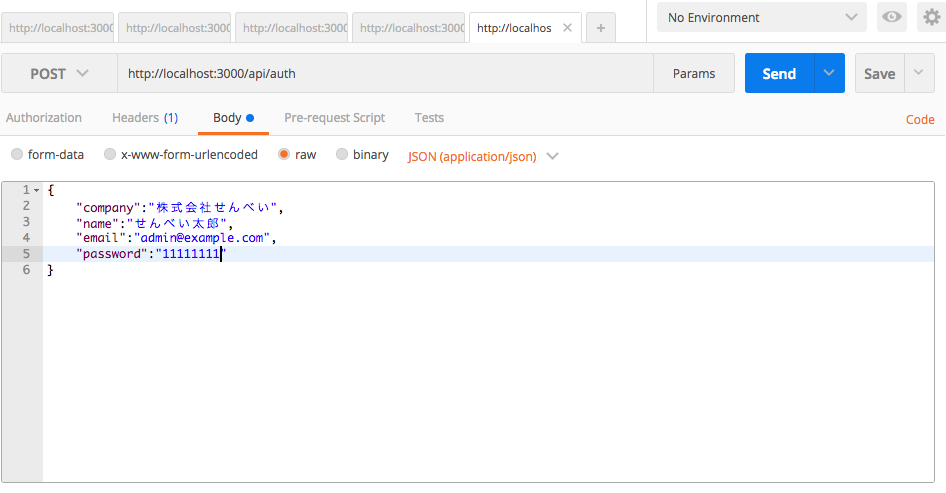
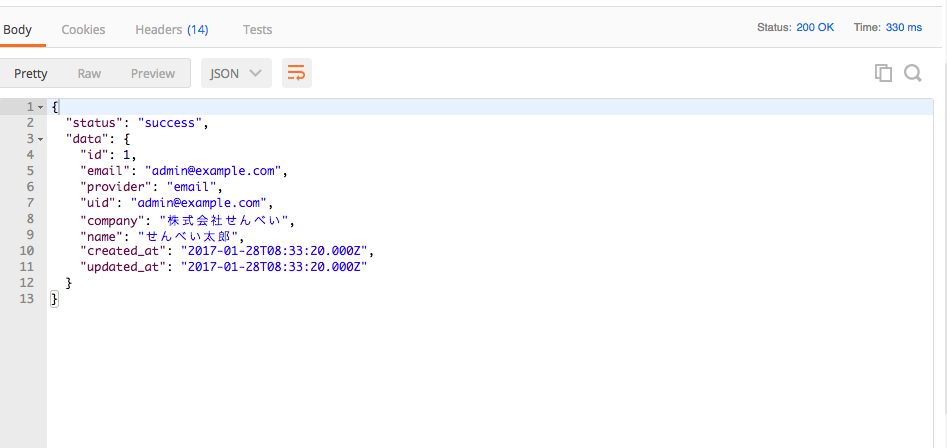


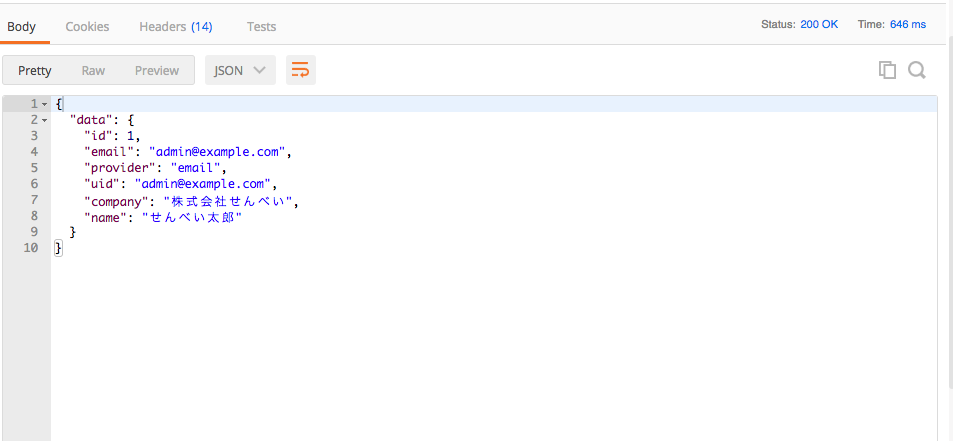
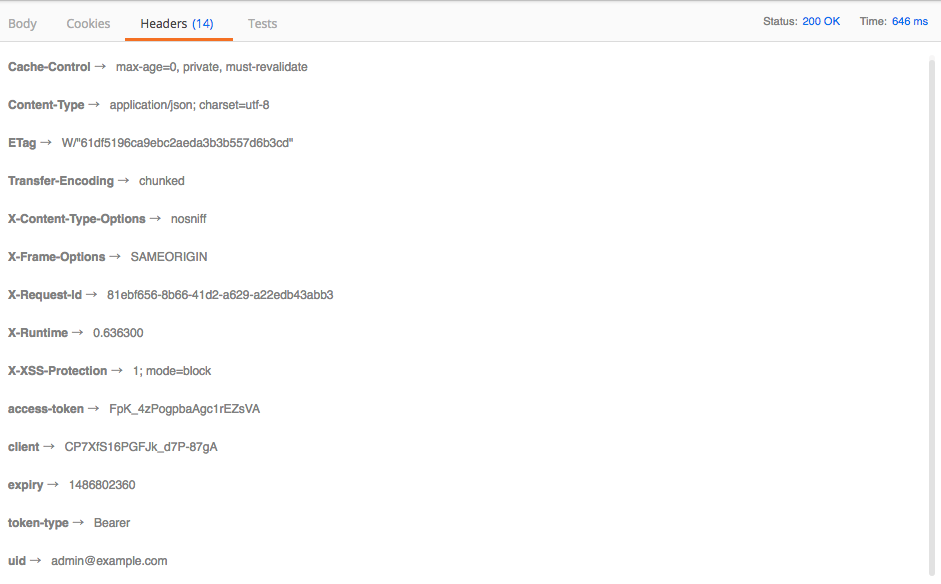
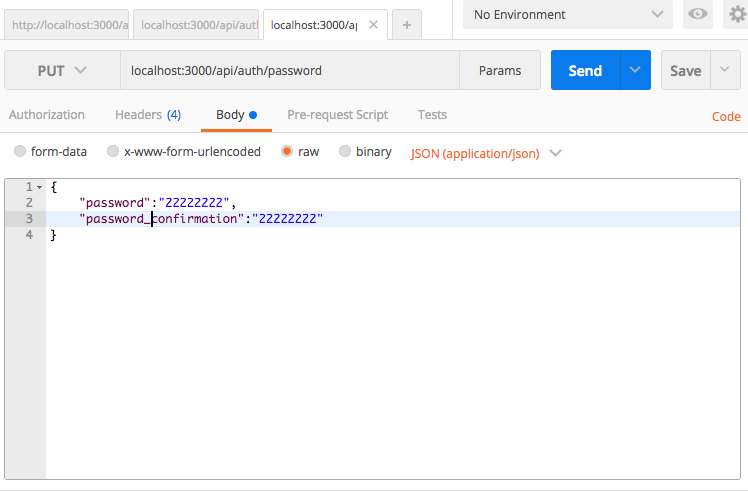
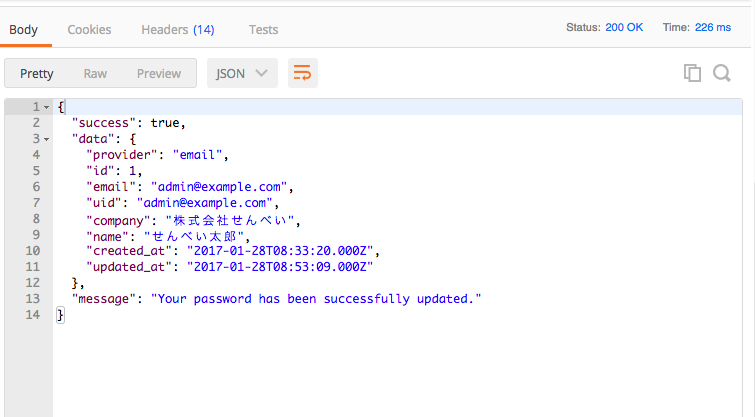
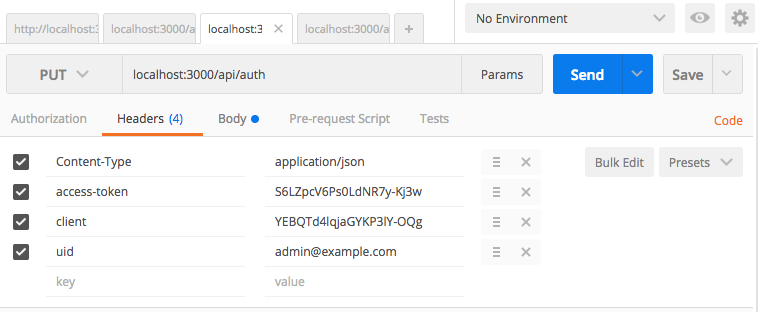
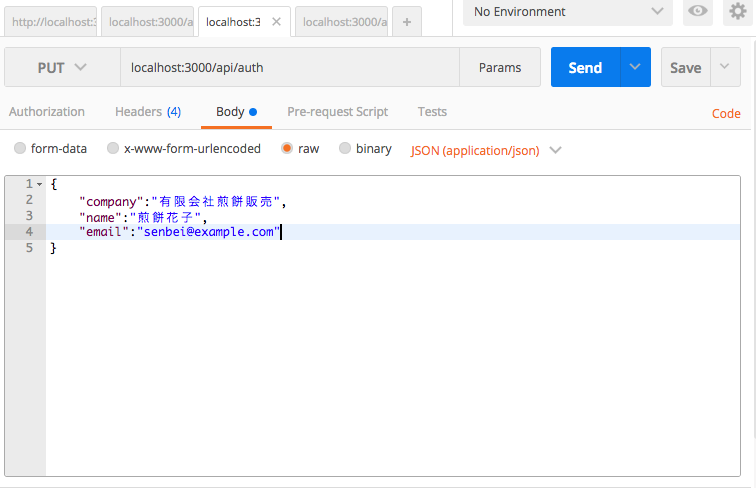
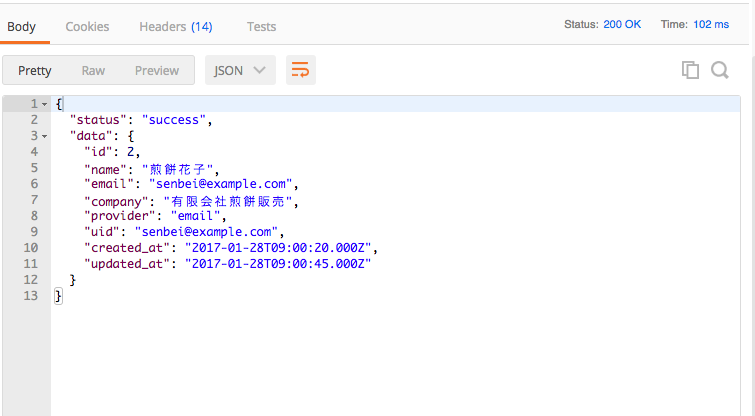

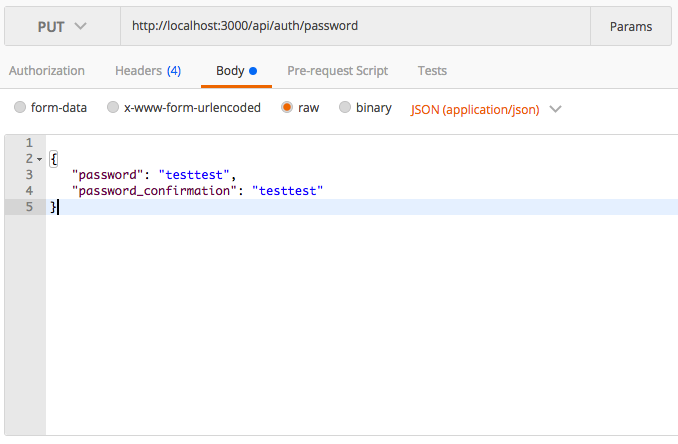
コメントを残す